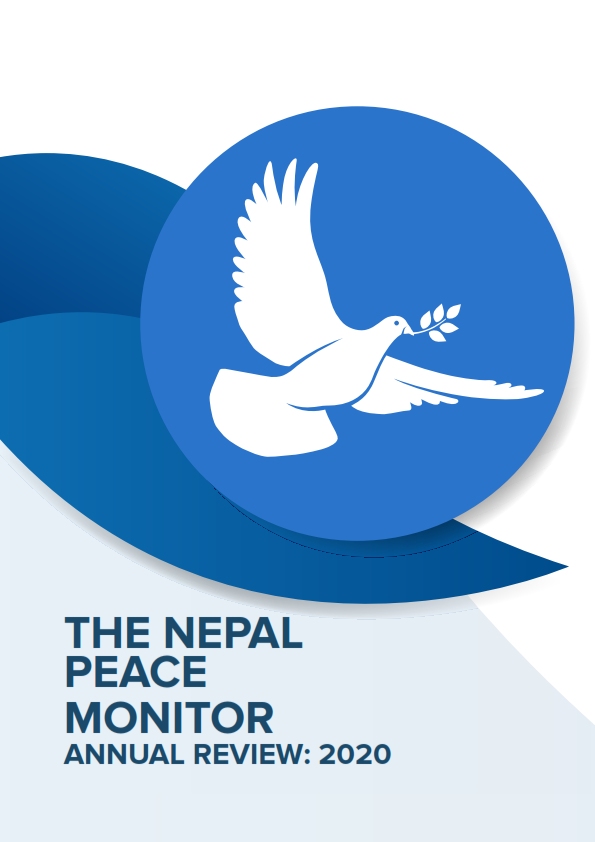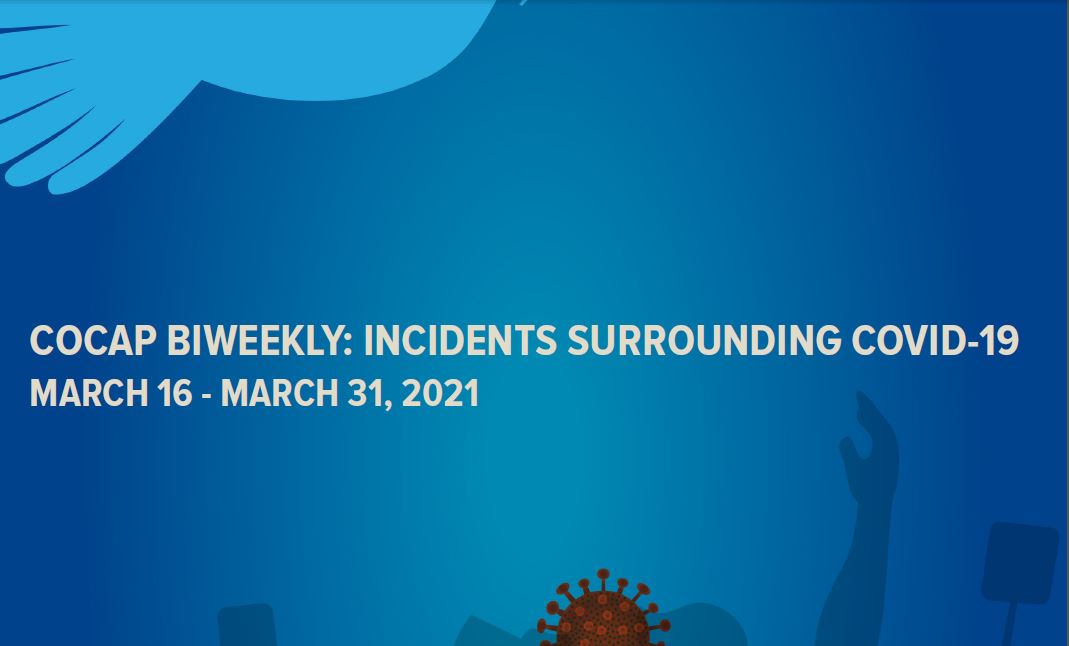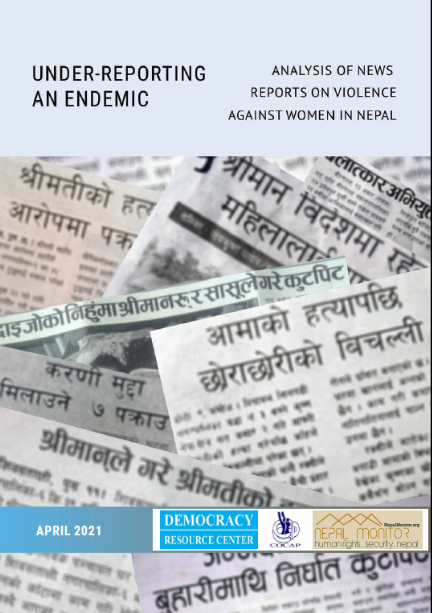Incident Reports
Stand against violence
2019-03-11
Nepal
What are the driving factors of violence against women and girls in Nepal? Why are we struggling to stop it? What needs to be done?
Government continues to introduce stricter laws as well as various policies and programs to tackle issues related to violence against women while the instances of such incidents have seen a sharp increase in recent years. In 2017, a total of 12,225 cases of domestic violence were registered with Nepal Police, a huge upsurge compared to 1,800 cases reported in 2013.
Similarly, the National Women’s Commission helpline received a total of 47,968 calls during November 2017 to August 2018 which were related to violence against women. Nepal’s Central Child Welfare Board reveals that 60 percent of rape victims in Nepal are girls under 16. One-third of them are below ten.
Couple of months back, two teenage sisters were acid-attacked while they were sleeping in their house in Rautahat. Suffering severe burns, one died in the hospital and another sister is still struggling to survive.
A married woman was acid-attacked when she was returning home from the market, while police in Sapatari district arrested the perpetrators who tortured a 40-year-old woman claiming that she was allegedly practicing witchcraft.
From various parts of India including New Delhi, more than 300 women were rescued this year from the trafficking rackets. Twenty two Nepali women were rescued by Kenyan police in Nairobi couple of months ago.
Recently, thousands of people came to the streets in Kathmandu and other parts of the country to protest the incident of rape and murder of a 13-year-old girl, Nirmala Panta. Other several incidents of rape, assault and killing of eight-month-old girl child to elderly women were reported in different parts of the country. These are some of the representative cases to understand the scale and severity of violence against women in Nepal.
Violence against women and girls in Nepal occurs at various levels and in many forms. These incidents include sex and gender-based discrimination, sexual assault, harassment, workplace harassment, rape, killing, domestic violence, polygamy, forced marriage, forced divorce, dowry related violence, marital rape, trafficking, acid attack, forced abortion, witchcraft, menstrual isolation (chhaupadi), torture, forced eviction, caste-based discrimination, disability discrimination, denial of citizenship rights, denial of property rights, biased and discriminatory treatment meted out to single women and many other types of violence.
Driving causes
What are the driving factors of violence against women and girls in Nepal? Why are we struggling to stop it? What needs to be done? These are the questions that we have to deal with.
There are micro-level and macro-level drivers in Nepali society that create conditions for violence against women to occur. Women’s lower social status, financial dependence combined with gender disparity and rigid patriarchal social values provoke violence against women and girls. Women’s economic independence is extremely poor in the country, while their participation in social and public life is limited.
Likewise, women’s access to education, services and opportunities is obstructed for various reasons, as evidenced by female literacy rate that stands at 57 percent compared to that of male literacy at 75 percent. Women’s access to legal justice is poor due to lengthy and costly justice system.
In many instances, cases of violence against women are resolved through political negotiations and local mediation rather than prosecuting the perpetrators. As a result, impunity has emerged as a major challenge.
Measures for change
Although, the situation is dire and challenges are enormous, the government and other institutions have been implementing measures to address violence against women and girls. Nepal’s new constitution has adopted considerably progressive provisions for women in terms of inheritance rights, protection from violence and, increasing their political participation and decision-making roles. The newly reformed criminal law has expanded the definition of violence against women and criminalized many forms of violence such as polygamy, menstrual isolation, marital rape which were not included in the law before. Minimum age of girls for marriage has been increased from 18 to 20 years and, the child marriage is deemed null and void. Also, the new law has increased the punishment in various types of crimes against women.
Women cells have been established in most of the police stations. The government and the stakeholders including the civil society, women groups, National Women Commission and National Human Rights Commission are working together to prevent violence against women and girls. In a recent move, the government has decided to control free access to pornographic material as well as alcohol consumption, which are identified as factors driving violence against women. A 24/7 helpline has been established for the victims of VAW to report at the National Women Commission. Programs have been initiated to increase the girl child’s school enrolment.
One of the welcoming moves of Province-2 government is its ‘Educate Girl Child, Save Girl Child’ campaign under which the provincial government is running girl education insurance, safety trainings and building of girls’ toilets in schools among others to end the discrimination and violence against girls and women.
Likewise, the provincial government also ensured 50 percent representation of women in police service and other governmental service sectors. These are commendable moves.
Research has shown a direct link between education and prevention of violence against women. Instances of violence have been found to reduce when education level is increased. So, the government needs to focus on girl’s education.
On the other hand, the patriarchal social values need to be changed as that has been undermining the issues of women’s rights, equality and gender justice. Likewise, access to justice, delayed justice and impunity are key concerns that need to be urgently and sufficiently addressed in cases of violence against women. Overall empowerment and gender equality is essential. Specific needs of victims of the VAW such as provision of shelter homes, fast track courts, victim-friendly justice system and protection from reoccurrence of violence need to be addressed. Special needs of vulnerable group of women from socially excluded communities, disabled women, minors, elderly women, single women and victims of domestic violence need to be addressed.
The author is a Commissioner at National Human Rights Commission, Nepal
Related Reports
GBV / Siraha
Complaint lodged against a 30-year-old man on the charge of raping a 13-year-old teenage girl in Siraha
GBV / Okhaldhunga
52-year-old man arrested on the charge of sexually assaulting a 16-year-old teen girl in Okhaldhunga
GBV / Humla
Teen boy arrested on the charge of raping a 40-year-old woman in Humla
GBV / Rupandehi
Complaint lodged against a 22-year-old youth on the charge of raping a minor girl in Rupandehi
GBV / Bhaktapur
25-year-old man arrested on the charge of harassing girl over social media
Related Trend Analysis
Analysis

THE NEPAL PEACE MONITOR ANNUAL REVIEW: 2020
October 25, 2021
Human Trafficking / LGBT+ Rights / GBV / Political / Children’s Rights / Senior Citizens’ Rights / HRD Issues / Human Rights / Interpersonal Violence / Governance / Covid-19 / Civic-Space / PwD
Analysis

COCAP BIWEEKLY: INCIDENTS SURROUNDING COVID-19 MARCH 1 - 15, 2021
March 25, 2021
GBV / Governance / Covid-19
_001.png)




